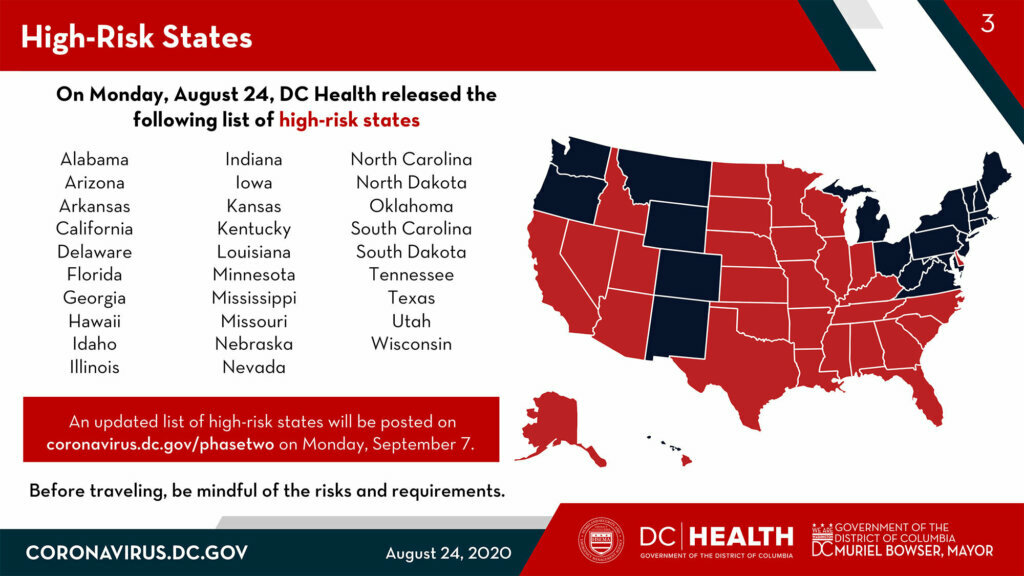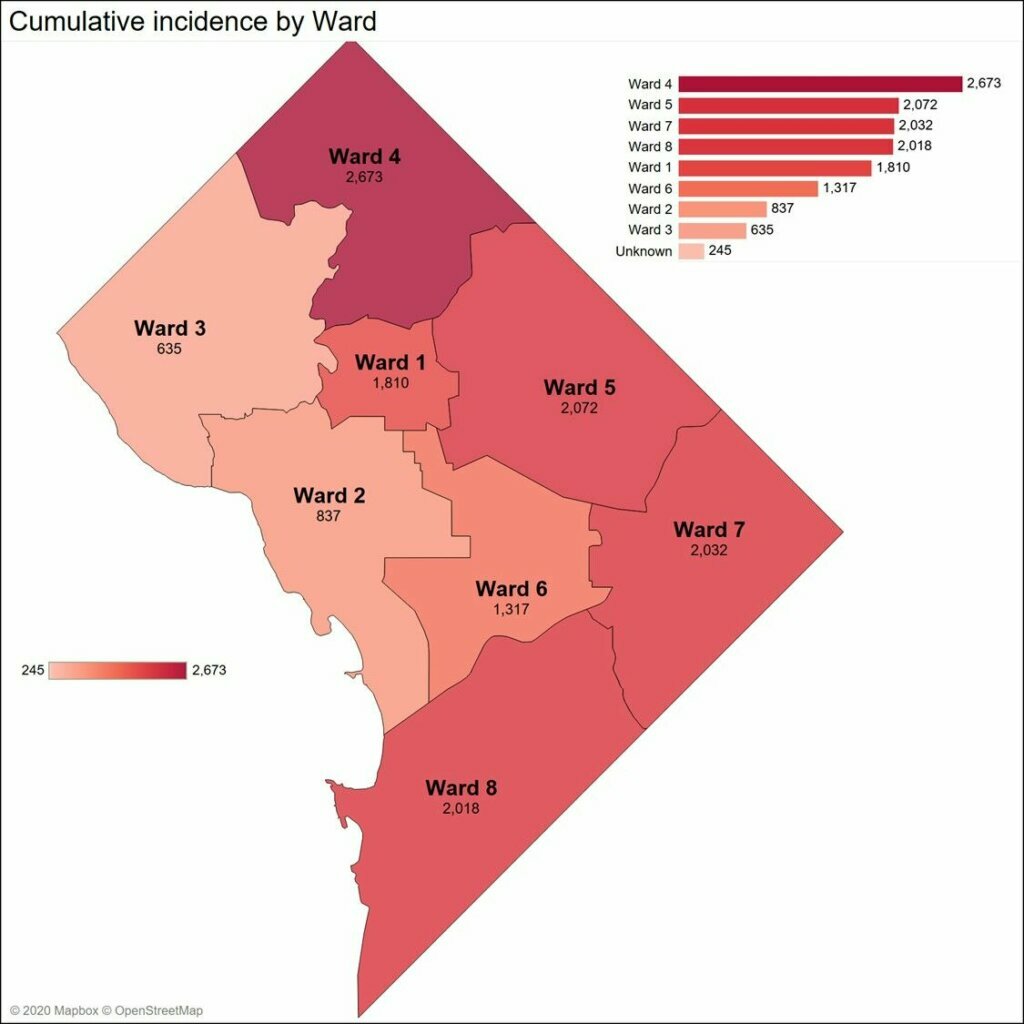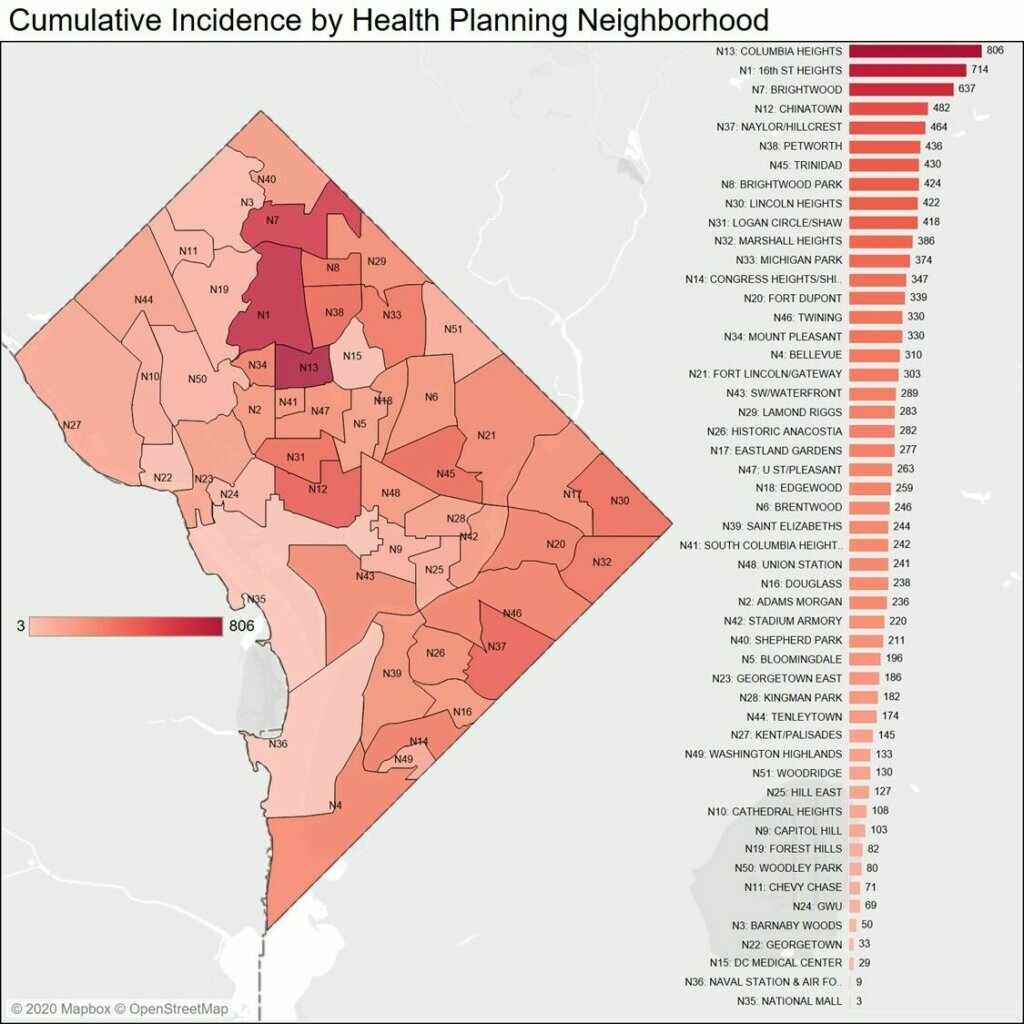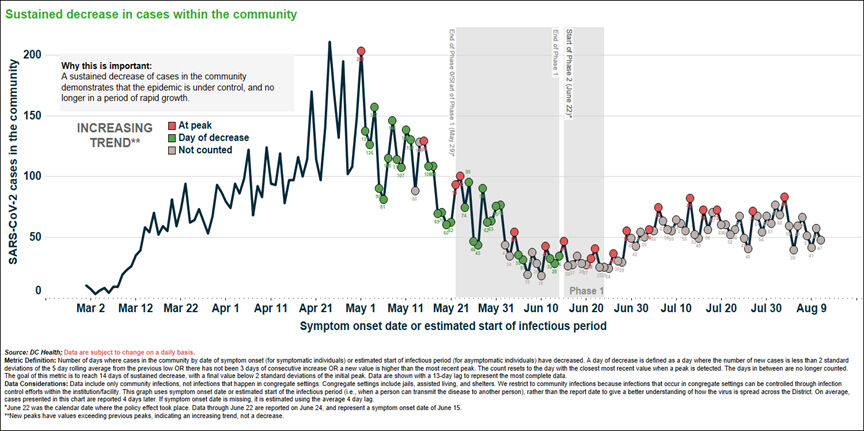If you’ve been eagerly awaiting D.C.’s move into Phase 3 of coronavirus reopening, you’ll have to wait a bit longer.
Dr. LaQuandra Nesbitt, D.C. Health director, described the District’s Phase 2 reopening a “much longer haul” than Phase 1 during a news conference Monday.
Asked when the District might begin to move into Phase 3, Nesbitt said “we began to manage those expectations very clearly back at the end of June, when we entered into Phase 2, that Phase 2 would be a much longer haul than Phase 1.”
“And particularly because we’re not only looking for declines in the number of cases that we see on a daily basis, but because we’re looking at the nature of those cases, and their relationship to one another,” Nesbitt said. “We would much rather begin to see clusters of cases as opposed to individual cases not being connected to one another, in order to indicate that it would be OK to move into Phase 3.”
- Sign up for WTOP alerts
- DC adds Delaware back to high-risk state list
- Fall school plans for DC, Maryland, Virginia systems during coronavirus
- Latest coronavirus test results in DC, Maryland and Virginia
- Coronavirus FAQ: What you need to know
Looking for more information? D.C., Maryland and Virginia are each releasing more data every day. Visit their official sites here: Virginia | Maryland | D.C.
She noted that a higher proportion of D.C.’s cases have been people 20 to 30, and younger age groups overall, since July 1 — even though the District has seen a decline in the number of COVID-related deaths.
“We continue to observe that trend, even if we just examine the data after Aug. 1. So it doesn’t mean that individuals who are over 65 still aren’t being impacted or that they aren’t at higher risk for severe illness. But we don’t drive our decisions based solely on seeing a decrease in the number of deaths in the District,” Nesbitt said.
It’s not all bad news, however. There are more activities that D.C. can turn on during Phase 2.
“You all should have in your mind’s eye that there may be activities that could be recommended to happen again, that would signal that we’re in still in Phase 2 with more activity, but not necessarily transitioning to Phase 3,” Nesbitt said.
“There are still a host of activities that we delayed in Phase 2 because our indicators weren’t exactly where we wanted them to be.”
Mayor Muriel Bowser addressed adding Delaware back to the District’s list of high-risk states and described adding Virginia and Maryland to the same list as “impractical.”
“I think we said pretty quick clearly from the outset that we think it’s impractical for our neighbors in Maryland and Virginia to be a part of the quarantine list, and that statement stands today,” Bowser said.
“If we feel the need to change that, we certainly will advise that we change it.”
Anyone coming into the District from a high-risk state is being told to self-quarantine for 14 days due to the coronavirus pandemic.
That includes anyone coming to D.C. for Friday’s March on Washington or the Republican National Convention.
D.C. Homeland Security and Emergency Management Agency Director Chris Rodriguez said the city has been meeting with organizers at the National Action Network as well as the RNC.
“It’s important to note that we at Homeland Security and Emergency Management, MPD, FEMS, have been in touch with the organizers of both events over the last week, as recently as late last week, to ensure that any city services that were being asked for or required that we were able to provide to ensure that all events go off safely and securely.”
DC coronavirus numbers
The District reported 49 new cases Monday. The total number of cases stands at 13,639.
No additional deaths were reported. D.C.’s death toll is 604.
Track the District’s coronavirus data online.
Below are maps of coronavirus cases by ward, neighborhood and community spread (click to enlarge).












